What's New
Displaying results 2681 - 2690 of 4052
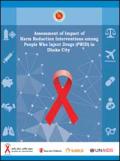
Resource | Publications,
This assessment was carried out to understand the dynamics of risk behavior and to provide a description of the current situation of the HIV epidemic in Bangladesh as well as its future projections. The study was supported by: the National AIDS/STD Program (NASP), IEDCR, Save the Children, UNAIDS Bangladesh, icddr,b and CDC Atlanta.
The aim of the study is to understand the HIV transmission dynamics and epidemiological trends in Dhaka city and to estimate the extent to which harm reduction interventions among PWID have contributed towards the epidemiological trends and reduced HIV transmission in the city. Cost efficiency of the existing harm reduction interventions is also examined.
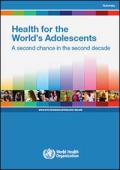
Resource | Publications,
What must we do to improve and maintain the health of the world’s one billion adolescents? Health for the world’s adolescents is a World Health Organization (WHO) report fully addressing that question across the broad range of health needs of people ages 10–19 years. It was presented to Member States at the 2014 World Health Assembly in follow-up to its 2011 Resolution 64.28, Youth and health risks.
Health for the world’s adolescents is a dynamic, multimedia, online report (who.int/maternal_child_adolescent/topics/adolescence/second-decade/en/). It describes why adolescents need specific attention, distinct from children and adults. It presents a global overview of adolescents’ health and health-related behaviours, including the latest data and trends, and discusses the determinants that influence their health and behaviours. It features adolescents’ own perspectives on their health needs.
The report brings together all WHO guidance concerning adolescents across the full spectrum of health issues.
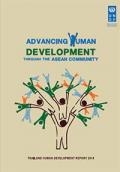
Resource | Publications,
This report’s review of the recent past suggests an agenda for advancing human development in Thailand over the years ahead: improving the quality of education; sustaining the successes in healthcare; completing the framework of social protection; confronting the issues of environmental decline and climate change; and tackling inequalities.
But there is a new feature on the political landscape that needs to be taken into consideration in this task. At the end of 2015, Thailand will become part of the ASEAN Community. ASEAN has been in existence for over half a century as a security grouping, and more recently as an evolving free trade area. But its transformation into a “Community” signals something new and potentially momentous in the region. What are the implications of this innovation for advancing human development in Thailand? That is the focus of this report.
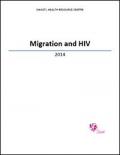
Resource | Publications,
Being a migrant is not a risk factor in itself, but poorer health and higher HIV vulnerability among migrants are explained by: discrimination, gender inequality, sexual violence and exploitation, dangerous working environments, poor living conditions, poor access to education and social services and, most importantly, poor access to health care. Migrants often lack access to mainstream health care, education and social services. Many migrants do not have legal status within their destination countries and live in isolation, making it difficult to protect themselves against the people who might exploit them or sexually abuse them. Social isolation and other factors may lead migrants to participate in high-risk behavior, including use of drugs and alcohol.
This regional review is curtailed due to the breadth of the topic. Migratory trends, economic push-pull factors, HIV epidemiological data, legal and policy environments, as well as national/regional HIV programming are all essential elements of any discussion on HIV and migration. This review will touch on all of these elements in a limited fashion while focusing on two high-volume migratory corridors that reflect the current trends in HIV epidemiology among migrant and mobile populations in Asia and the Pacific.
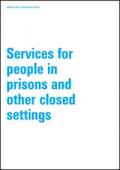
Resource | Publications,
Globally, prisons and other closed settings are characterized by relatively high prevalence of HIV, hepatitis B and C and tuberculosis (TB) and relatively higher risks for transmission together with lower access to health services. Isolated from public health services, including national AIDS or TB programmes, prisons and other closed settings are often seriously neglected in country responses to address HIV and TB prevention, treatment and care. The United Nations Office on Drugs and Crime (UNODC), the World Health Organization (WHO) and UNAIDS advocate for the implementation of evidence-based interventions that aim to ensure access to services for populations at higher risk. This includes a comprehensive programme for the prevention, treatment and care of HIV and TB among people in prisons and other closed settings.
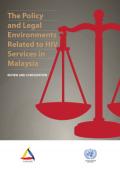
Resource | Publications,
This report identifies the current status of policy and legal environment in Malaysia that safeguard the universal human rights of the key affected populations with regard to the HIV prevention, care and treatment. The review and consultation establishes a baseline on the current enabling environment (policies and laws) in relation to safeguarding the human rights of the key populations and second, and it provides a set of recommendations to input into any reforms to promote an enabling environment where the human rights of the key populations are protected.
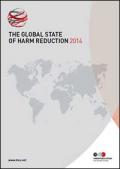
Resource | Publications,
The Global State of Harm Reduction 2014 maps the response to drug-related HIV, viral hepatitis and tuberculosis. It also integrates updated information on harm reduction services into each regional chapter, including on needle and syringe programmes (NSPs) and opioid substitution therapy (OST) provision; harm reduction services in the prison setting; access to antiretroviral therapy for people who inject drugs; regional overdose responses; policy developments; civil society developments; and information relating to funding for harm reduction.
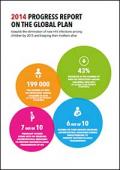
Resource | Publications,
This report reflects the results of data for the calendar year 2013. For the first time since the 1990s, the number of new HIV infections among children in the 21 Global Plan priority countries in sub-Saharan Africa dropped to under 200 000 [170 000–230 000]. This represents a 43% decline in the number of new HIV infections among children in these 21 countries since 2009, providing reasons for optimism as the Global Plan pushes towards its 2015 goals of 90% reduction. However, there are also reasons for concern. Between 2012 and 2013 the pace of progress in reducing new HIV infections among children across the priority countries slowed substantially. While a number of countries made impressive gains, others stagnated or lost ground.
As the Global Plan makes the final push towards 2015, it is critical to consolidate the significant gains that have been made in many countries, to accelerate progress where results have stalled or reversed direction and to redouble our collective efforts towards the elimination of new HIV infections among children and keeping their mothers alive.
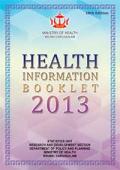
Resource | Publications,
The Ministry of Health through the Department of Policy and Planning is pleased to share the Health Information Booklet 2013 publication which marks the eighteenth edition.
The department continues to enhance efforts in ensuring the provision of accurate, timely and reliable health statistical information that serves as useful reference to policy makers, planners, healthcare providers, researchers and to the public at large. This is also in meeting the needs for monitoring of our health indicators which aligns with the Millennium Development Goals and in providing health data that are regularly reported to international organisations particularly the World Health Organisation (WHO).
This 2013 publication has incorporated additional information such as relating to Pharmacy Services, Maternal and Child Health Services, Hospital Specialist Services Attendances, and Age Standardised Mortality Rate of Noncommunicable Diseases.
The implementation of the Brunei Darussalam Healthcare Information Management System (Bru-HIMS) also contributes to enhancing the efficiency of data collection process and that health information can be easily and timely accessed, hence also improving the quality of health information publication in the future.
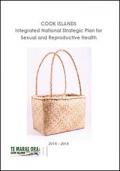
Resource | Publications,
The resident population of the Cook Islands was estimated at 14,974 in 2011(Cook Islands census 2011). There has been a population shift from the outer islands to the main population centres in Rarotonga and Aitutaki with 85% (13,097) living there. Life expectancy at birth is 72.8 years and it has an infant mortality rate of 6.8 deaths per 1,000 live births. The economy is largely dependent on tourism with a majority of tourists coming from New Zealand.
The NSP Working Group met from June 2012 to October 2013 and identified the following Priority Areas for the Cook Islands Integrated National Strategic Plan for Sexual and Reproductive Health. These priority areas are integrated with each other and not prioritised within themselves; each is as important as the others: leadership and policies, prevention and gender rights, program integration, comprehensive management of STIs and family planning, reproductive health and gender based violence.





